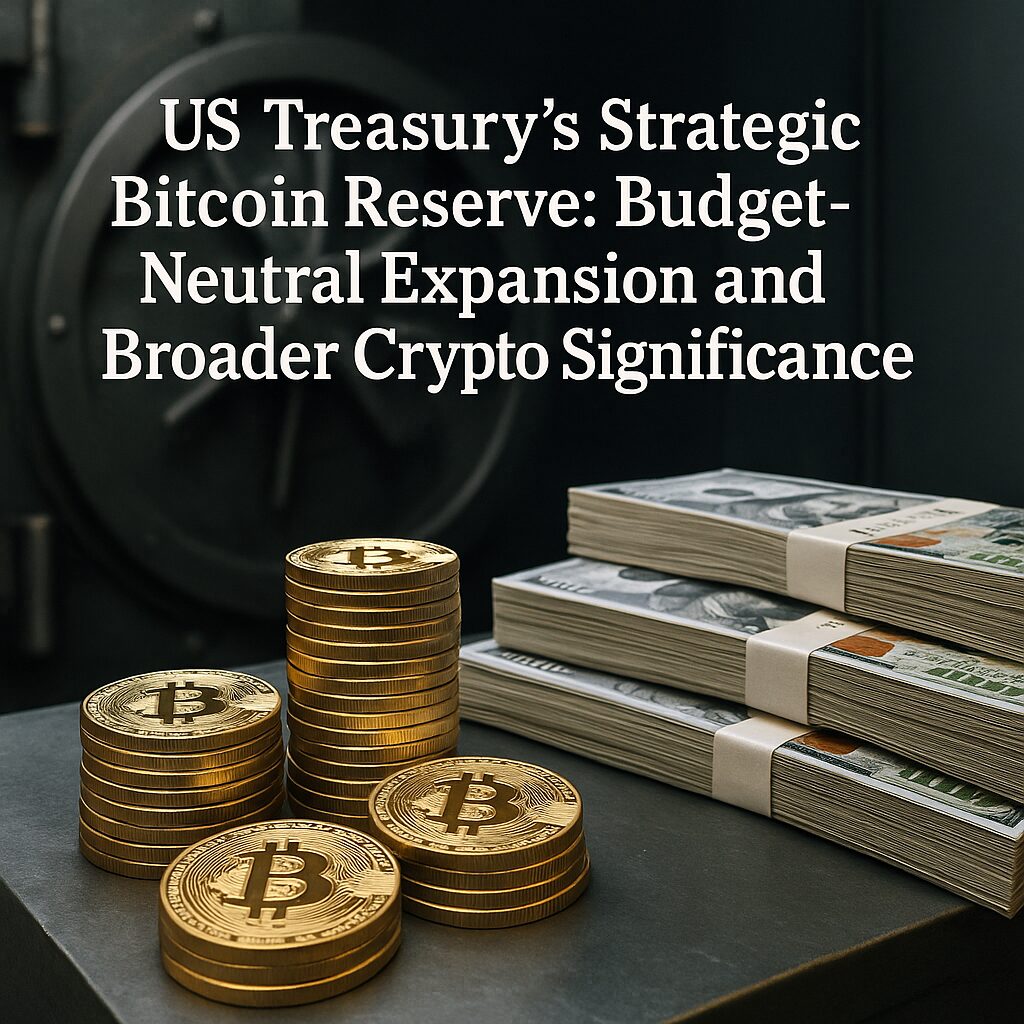
Main Points:
- The U.S. Strategic Bitcoin Reserve is built entirely from seized Bitcoin, currently valued at $15–20 billion.
- Treasury Secretary Scott Bessent clarified initial remarks that no new purchases would be made, later reaffirming exploration of budget-neutral acquisition methods.
- Proposals include revaluing gold reserves, using tariff revenues, or issuing Bitcoin‑backed bonds — all without increasing taxpayer burden.
- The Strategic Bitcoin Reserve is part of a broader push to treat Bitcoin as a “digital gold” and strengthen U.S. leadership in digital assets.
- The policy has sparked mixed reactions: proponents see diversification potential; critics warn of politicization, market risk, and lack of legislative support.
1. Establishing the Strategic Bitcoin Reserve: A “Digital Fort Knox”
In March 2025, President Trump signed an executive order launching the Strategic Bitcoin Reserve, described as a “digital Fort Knox for digital gold.” The reserve comprises Bitcoin the U.S. government acquired through law enforcement seizures—roughly 200,000 BTC—and forbids any current sales of that holding.
This reserve differs from the newly created U.S. Digital Asset Stockpile, which holds other forfeited cryptocurrencies and may be adjusted or liquidated under budget‑neutral constraints.
Figure 1 (Strategic Reserves Comparison):

2. Bessent’s Remarks: From “No New Buys” to “Budget-Neutral Exploration”
On August 14, Treasury Secretary Scott Bessent caused a stir during a Fox Business interview by stating the government would not acquire additional Bitcoin and would rely solely on existing holdings valued at $15–20 billion. That comment triggered a brief market drop.
However, later that day he clarified via social media (X) that the Treasury remains committed to exploring budget‑neutral pathways to expand the reserve, aligning with the President’s ambition of making the U.S. a “Bitcoin superpower”.
Media outlets including CoinDesk, Cryptobriefing, and others echoed this reversal, emphasizing that while no new purchases have taken place yet, the door remains open — provided taxpayer cost does not increase.
3. Exploring Budget-Neutral Acquisition Methods
Several budget-neutral strategies have been floated:
- Revaluation of gold reserves, unlocking capital without raising new funds.
- Utilizing tariff revenues or issuing Bitcoin‑backed bonds, effectively financing purchases through federal receipts or instruments rather than direct spending.
- The Treasury is reportedly studying these channels, though no concrete pathway has been executed yet.
4. Strategic Purpose and International Ambition
The administration’s policy frames Bitcoin as an immutable, scarce, and decentralized asset, akin to gold, warranting strategic treatment regardless of price volatility.
Supporters argue that the reserve:
- Diversifies national holdings.
- Enhances U.S. standing in digital asset competition.
- Signals forward‑looking adoption of blockchain and crypto frameworks.
Economists, however, caution that benefits remain largely symbolic; market instability or politicization might outweigh speculative value.
5. Legislative and Political Challenges
Senator Cynthia Lummis has introduced the BITCOIN Act, aiming to codify the reserve and purchase up to 1 million BTC over five years via fund diversification — legislation that would solidify the reserve’s legal foundation.
Meanwhile, the lack of detailed policy or congressional backing raises concerns. Some lawmakers argue the reserve may politicize crypto policy and distract from broader industry regulation.
6. Market Reaction and Forward Outlook
Bitcoin markets briefly reacted to Bessent’s initial statement, dropping market cap by tens of billions. However, the clarification helped normalize expectations.
Going forward, clarity on how the Treasury intends to execute budget-neutral acquisitions will be key to market confidence and policy credibility.
Figure 2 (Bitcoin Price & Realized Cap Chart):

Conclusion
The U.S. Strategic Bitcoin Reserve represents a groundbreaking move to integrate digital assets into national financial policy. Rooted in seized Bitcoin holdings and guided by the principle of budget neutrality, the reserve maintains government flexibility while preventing new fiscal burdens.
Bessent’s recent backtracking demonstrates sensitivity to market sentiment and underscores the importance of careful messaging. Yet, without a concrete acquisition plan or legislative foundation, the reserve remains aspirational.
For blockchain practitioners, crypto investors, and policymakers, the initiative signals that digital assets are entering the realm of statecraft. If executed with transparency and discipline, the Strategic Bitcoin Reserve may become a case study of how governments can adopt crypto pragmatically. However, watchers should monitor legislative developments, budget-neutral funding pathways, and broader regulatory integration moving forward.

